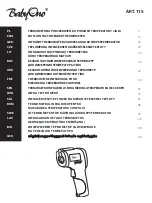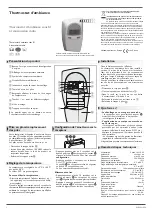
n
It is essential to avoid the penetration of secondary liquids into the
device (e.g. via a defective heat exchanger provided by the customer).
n
Observe all product safety labels/safety marks on the device.
Additional safety advice for water-cooled devices
n
Use suitable cooling water to prevent corrosion in the cooling water
circuit.
n
The return hose of the water cooling system must be securely fixed in
the outlet area to prevent uncontrolled slipping of the hose, even in the
event of pressure surges.
n
The return hose of the water cooling system must be fixed in the outlet
area in such a way that hot cooling water cannot splash out.
n
Avoid bending or squeezing the return hose of the water cooling system.
Gage pressure can cause the cooling water hoses to rupture and hot
cooling water to escape.
n
In order to avoid damage caused by leakage of the cooling water system,
it is recommended to install a leakage water detector with water shut-
off.
Additional safety instructions for high-temperature thermostats with water
cooling
n
High-temperature thermostats with cooling water connection (type W)
always require a cooling water supply, even if the devices are only used
for heating.
1.2
Obligations of the operator
The national regulations for operation applicable in the country in which the
system is installed must be complied with.
In particular, the application of statutory regulations concerning operational
safety must be observed.
Note the installation conditions outlined in
on page 161.
Operators within the EU must meet the applicable provisions of Regulation
(EU) No. 517/2014 on fluorinated greenhouse gases. The regulation provides
a complete overview, and includes:
n
The general purpose of the regulation is to reduce emissions of fluori-
nated greenhouse gases.
n
Regular tightness checks, depending on the quantity of CO
2
equivalent
(see type plate and regulation; regular tightness checks may be neces-
sary if the CO
2
equivalent exceeds 5 t).
n
Having leakage inspections, maintenance, repairs, decommissioning
or recovery work carried out by certified, authorized personnel (for
example LAUDA Service).
n
Keeping records of refrigerants added or recovered, including quantity
and type. Records must be kept for a minimum of 5 years.
V6
Integral Process Thermostats and High-Temperature Thermostats
9 / 198










































